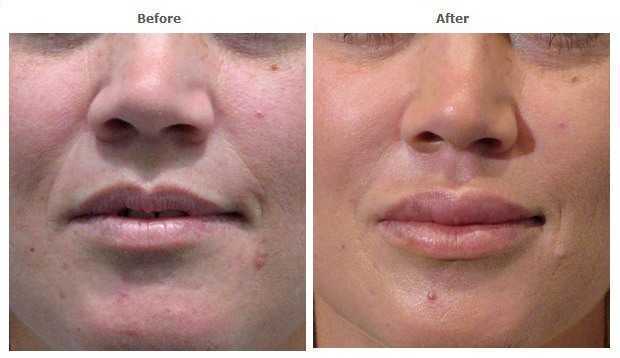Nasal Labial Fold
What are nasal labial folds?
Nasal labial folds, often called smile lines or laugh lines, are the natural creases that form between the corners of the nose and the corners of the mouth. Over time, these lines may become deeper and more visible.
What causes nasal labial folds?
Nasal labial folds can be influenced by several factors, including:
- Ageing – As we age, the skin naturally loses collagen and elasticity, which may cause sagging and the formation of folds.
- Excessive sun exposure – UV rays can break down collagen and accelerate skin ageing.
- Genetics – Family history can play a role in how facial features and skin changes develop over time.
The gradual breakdown of collagen, a protein that helps maintain skin firmness, can cause the skin to loosen, creating a sagging appearance and deeper folds.
Treatment options
There are both non-surgical and surgical options that may help reduce the appearance of nasal labial folds. The most suitable approach depends on factors such as age, skin condition, level of sun damage, and individual preferences. A qualified practitioner will assess your situation and discuss appropriate options with you.
Non-invasive procedures
Non-invasive treatments aim to restore volume to the face and smooth out lines or wrinkles without surgery. These treatments may temporarily improve the appearance of nasal labial folds by adding volume and improving skin texture.
It is important to note that these procedures do not stop the natural ageing process but may help to temporarily restore some lost facial volume.
Possible side effects can include:
- Redness or swelling
- Bruising at the treatment site
- Formation of small lumps under the skin, which often resolve over time or with gentle massage
- Allergic reactions (an allergy test may be required before treatment)
A consultation will help determine whether you are a suitable candidate for this type of procedure.
The procedure
Non-invasive treatments are usually performed on an outpatient basis. While exact steps may vary, a typical procedure may involve:
- Marking and cleansing the treatment area with an antibacterial solution.
- Applying a topical anaesthetic to reduce discomfort.
- Administering the treatment to restore volume or smooth the targeted area.
- Applying a cold pack immediately after treatment.
- Allowing the application of makeup to return to daily activities, if advised by your practitioner.
Recovery is generally minimal, though some temporary swelling or bruising may occur. It is usually recommended to avoid strenuous exercise, excessive sun exposure, or heat for the rest of the day after treatment.
Results and maintenance
Some people notice an improvement immediately after treatment, while for others, changes may take a few days to become apparent. Results are temporary, typically lasting a few months to up to one year, depending on the treatment used and individual factors.
Repeat treatments may be considered to help maintain the outcome.
Surgical option: Facelift
A facelift, also known as meloplasty or rhytidectomy, is a surgical procedure aimed at tightening and lifting sagging facial tissues. This may improve facial contours and reduce the appearance of deep folds, including nasolabial folds.
Facelifts are most commonly considered by individuals between the ages of 40 and 65, though they may be performed on younger or older patients depending on their circumstances. The results of a facelift can vary and may last for several years, typically 5 to 12 years.
Purpose of facelift surgery
The goals of facelift surgery may include:
- Reducing visible signs of ageing in the face and neck
- Improving the contours of the face
- Smoothing sagging skin
- Combining with other procedures such as brow lifts or eyelid surgery for a more comprehensive result
It is important to note that facelift surgery does not alter the bone structure of the face.
Procedure overview
Facelift surgery is usually performed under general anaesthesia or local anaesthesia with sedation. The approach depends on factors such as skin type, overall health, and treatment goals.
In some cases, a small, thin tube may be placed under the skin temporarily to drain excess fluid. The length of hospital stay depends on the complexity of the procedure and the individual’s recovery progress.
Post-operative care
Following facelift surgery, Dr Xu will provide specific aftercare instructions, which may include:
- Eating light meals and drinking fluids a few hours after surgery
- Sleeping with your head elevated to reduce swelling
- Taking prescribed medications to manage pain and swelling
- Avoiding strenuous activities such as heavy lifting, swimming, or vigorous exercise until cleared by Dr Xu
Risks and Complications
All surgical procedures carry some risks. While facelifts are generally safe when performed by qualified professionals, potential risks and complications may include:
- Bleeding or infection
- Allergic reactions
- Blood clots or hematomas
- Pain or numbness
- Swelling and bruising
- Scar formation
- Hair loss around the incision site
- Skin loss
- Earlobe changes
- Facial nerve injury
- Need for revision surgery in some cases
Smokers may have an increased risk of complications and delayed healing.
Recovery and expectations
Initial recovery usually takes a few weeks. Visible swelling and bruising typically subside during this time, though final results may take several months to fully develop.
Dr Xu will discuss what you can realistically expect from surgery, including limitations and the temporary nature of results.

